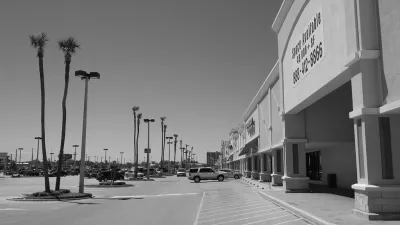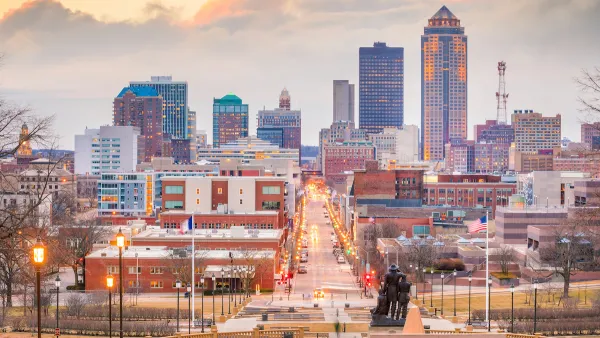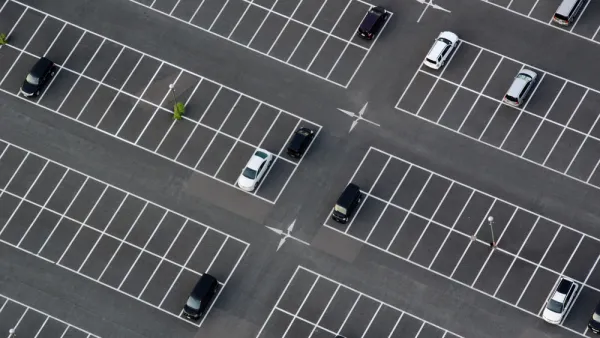Here's one you probably didn't see coming. A recent pair of articles makes the case for preservationists to find ways to protect surface parking lots.

(Updated 6/5/2014) According to a new article by David Rotenstein on the National Council on Public History website, "parking lots are a key component of American landscapes and histories. While no reasonable preservationist or historian would advocate for saving every parking lot and retaining what are often critically characterized as “seas of asphalt,” there may be merits to preserving elements of the twentieth-century built environment that capture our nation’s automobile-centered culture and the infrastructure required to support it."
"For many reasons–aesthetics, environmental health, the high cost of urban and suburban real estate–it’s more difficult to make a case for parking lots as contributing resources in a cultural landscape than it is for the open spaces that are preserved around many kinds of historic sites," says Rotenstein. But he gives "creatively incorporating adaptive use techniques" a shot anyway: "Parking lots that once catered to cars now find secondary uses as urban farmers’ markets, festival sites, and pop-up skate parks. Many, like those in suburban Washington or Atlanta, have been appropriated by new immigrant communities who succeeded America’s baby boomers in suburbia. Some of these spaces are now serving as unofficial civic plazas and market places…"
Rotenstein published a supplemental post at the History Sidebar website, where he points out the irony that the National Historic Preservation Act of 1966 was created, in part, as a reaction to old buildings being demolished to make space for parking lots. But now, the "anything is new is better" mantra of many planners and developers has reversed the pendulum back to parking lots, "[even] historic preservationists with the best intentions find themselves overlooking and minimizing the historical significance of suburban commercial landscapes, i.e., parking lots."
Rotenstein is also aware of how the idea of preservationists working to protect parking lots has been the subject of satire before.
*This post was updated with the correct spelling of the author's name.
FULL STORY: Blacktop history: The case for preserving parking lots

Analysis: Cybertruck Fatality Rate Far Exceeds That of Ford Pinto
The Tesla Cybertruck was recalled seven times last year.

National Parks Layoffs Will Cause Communities to Lose Billions
Thousands of essential park workers were laid off this week, just before the busy spring break season.

Retro-silient?: America’s First “Eco-burb,” The Woodlands Turns 50
A master-planned community north of Houston offers lessons on green infrastructure and resilient design, but falls short of its founder’s lofty affordability and walkability goals.

Test News Post 1
This is a summary

Analysis: Cybertruck Fatality Rate Far Exceeds That of Ford Pinto
The Tesla Cybertruck was recalled seven times last year.

Test News Headline 46
Test for the image on the front page.
Urban Design for Planners 1: Software Tools
This six-course series explores essential urban design concepts using open source software and equips planners with the tools they need to participate fully in the urban design process.
Planning for Universal Design
Learn the tools for implementing Universal Design in planning regulations.
EMC Planning Group, Inc.
Planetizen
Planetizen
Mpact (formerly Rail~Volution)
Great Falls Development Authority, Inc.
HUDs Office of Policy Development and Research
NYU Wagner Graduate School of Public Service




























